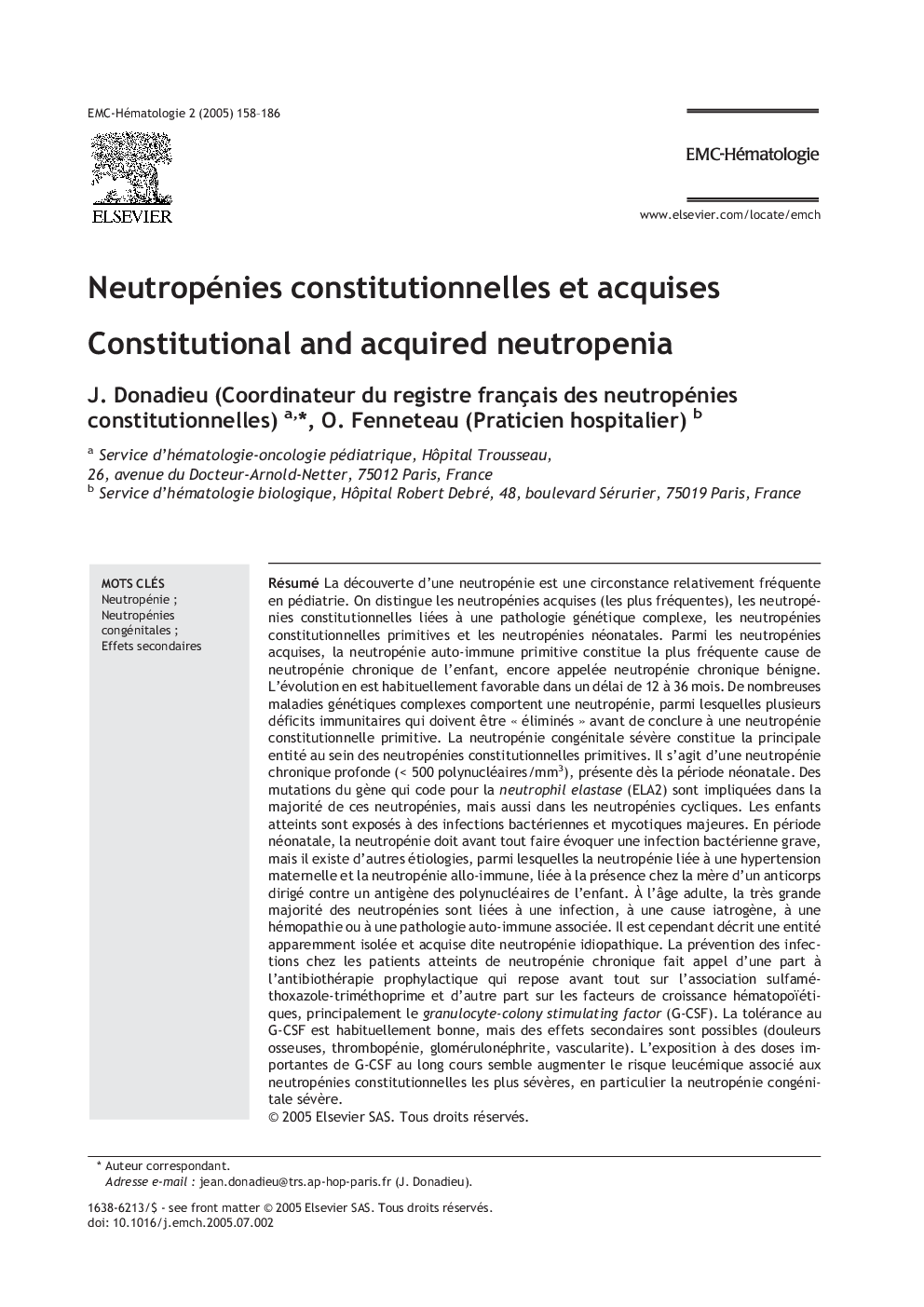| Article ID | Journal | Published Year | Pages | File Type |
|---|---|---|---|---|
| 9258273 | EMC - Hématologie | 2005 | 29 Pages |
Abstract
Evaluating a neutropenia induces first documenting its aetiology. Beside the specific aspects of the newborn, neutropenia in a child may be 1) acquired - the most frequent type -, 2) constitutional, part of a complex genetic disease, 3) constitutional, isolated. Primary acquired neutropenia, also called benign chronic neutropenia, is the most frequent cause of chronic neutropenia in children. It is usually well tolerated and has a frequent favourable outcome in 12-36 months. Many complex genetic diseases include a neutropenia, among which several immunologic disorders that must be ruled out before considering the diagnosis of isolated constitutional neutropenia. Severe congenital neutropenia is the main primary constitutional neutropenia. It is profound, usually < 500 polymorphonuclear leukocytes/mm3 and exposes to severe pyogenic and fungal infections. Mutations in the gene encoding neutrophil elastase (ELA2) are the most common genetic abnormalities in this group of patients, as well as for patients with cyclic neutropenia. In the neonatal period, neutropenia must primarily suggest a bacterial infection, although other aetiologies have to be known, particularly neonatal neutropenia caused by passive transfer of maternal antibodies and neutropenia related to gravidic hypertension. In adulthood, most neutropenias are related to an infection, to the side effect of a drug, to a malignant haemopathy or to an autoimmune disease. A clinical entity, the idiopathic neutropenia, is described, however, apparently completely primitive and acquired. The treatment of severe chronic neutropenia is directed towards the prevention of infections. It includes prophylactic antibiotherapy such as the trimetroprim-sulfamethoxazole association, the most commonly used, and granulocyte colony stimulating factor (G-CSF). G-CSF has considerably improved patients' conditions. It is usually well tolerated, but side effects have been reported (bone pain, thrombocytopenia, glomerulonephritis, vasculitis). Long-term treatment by high-dose G-CSF has been shown to increase the spontaneous natural risk of leukaemia in patients with congenital severe neutropenia.
Related Topics
Health Sciences
Medicine and Dentistry
Hematology
Authors
J. (Coordinateur du registre français des neutropénies constitutionnelles), O. (Praticien hospitalier),
